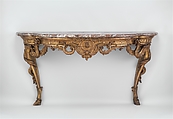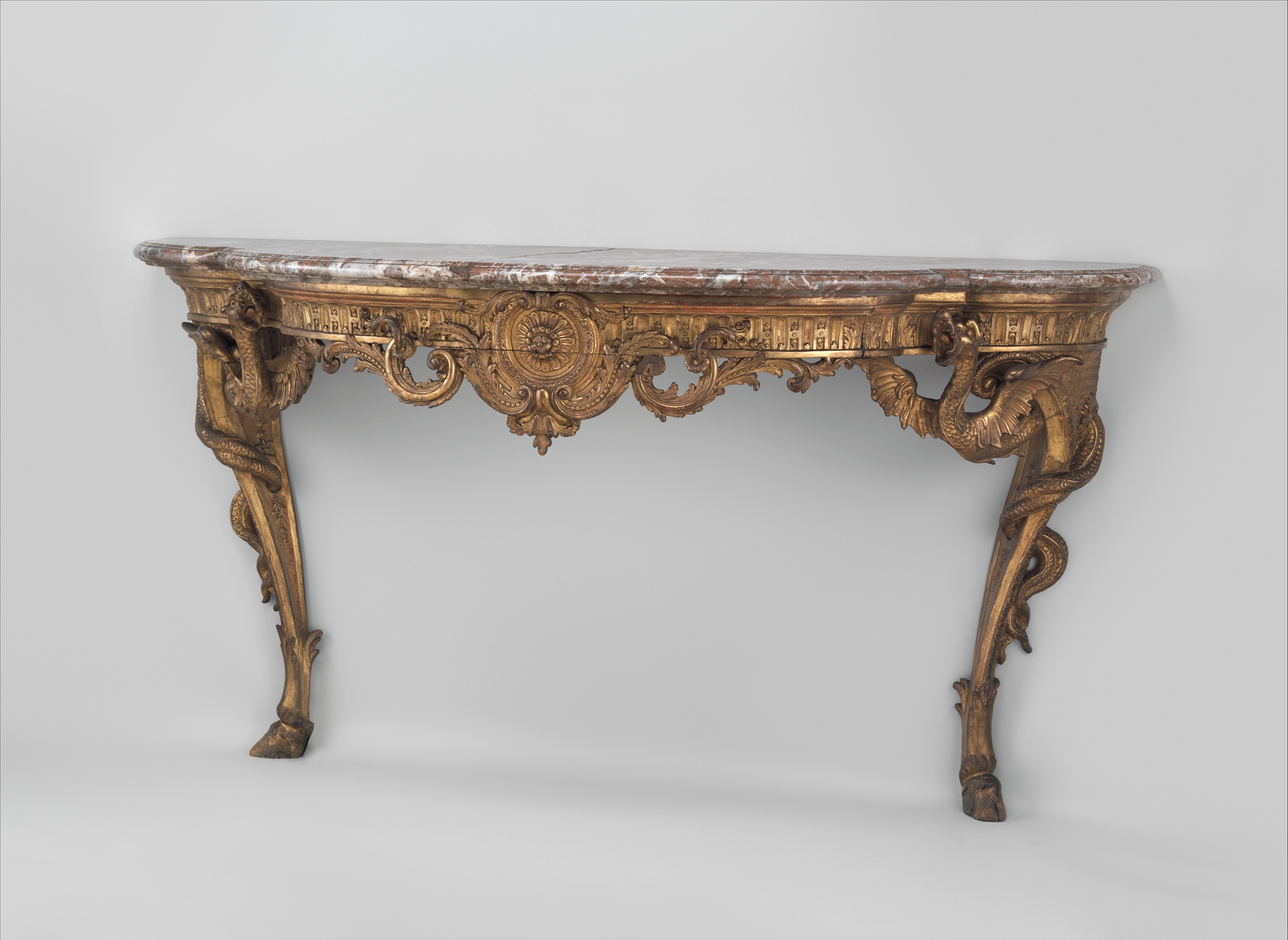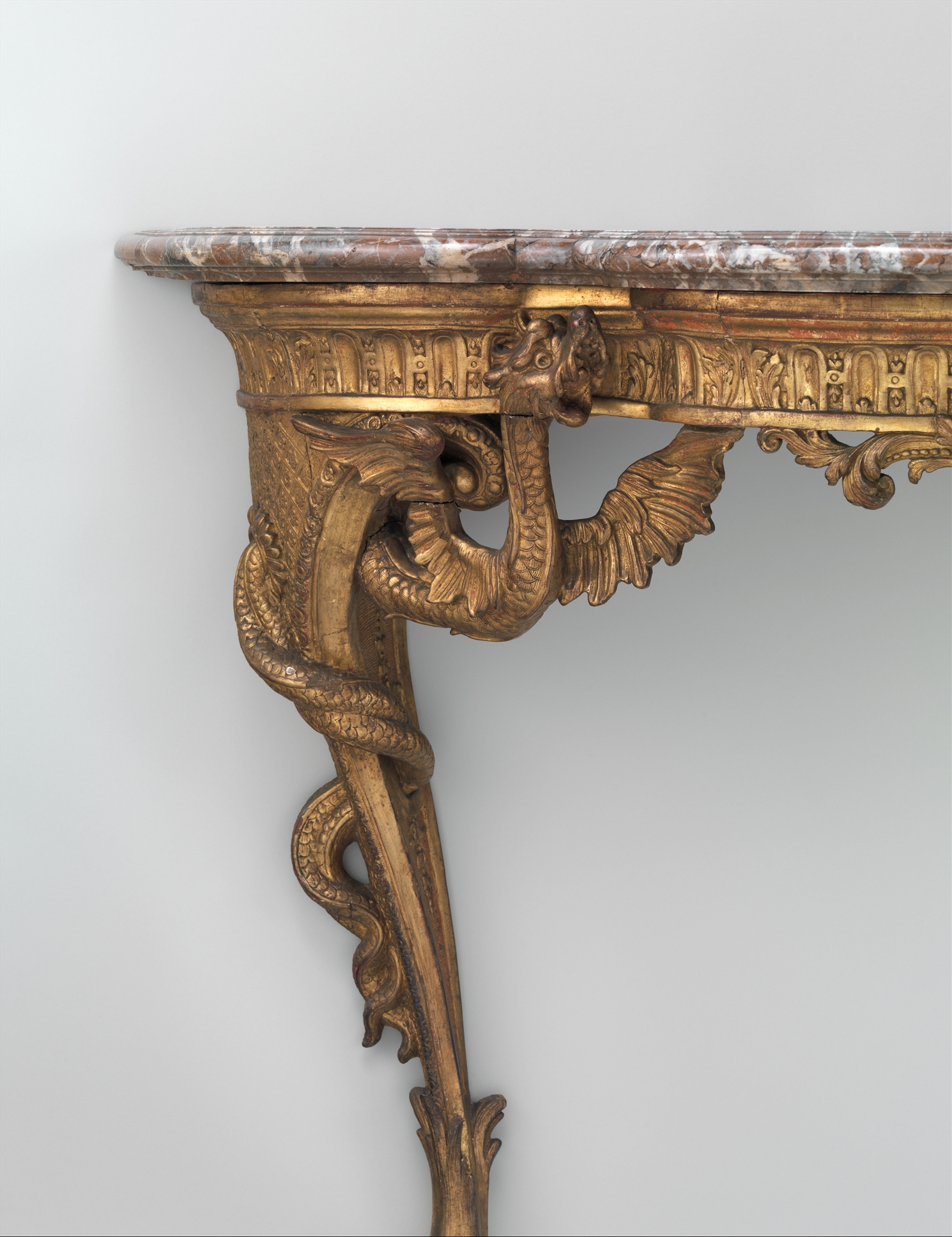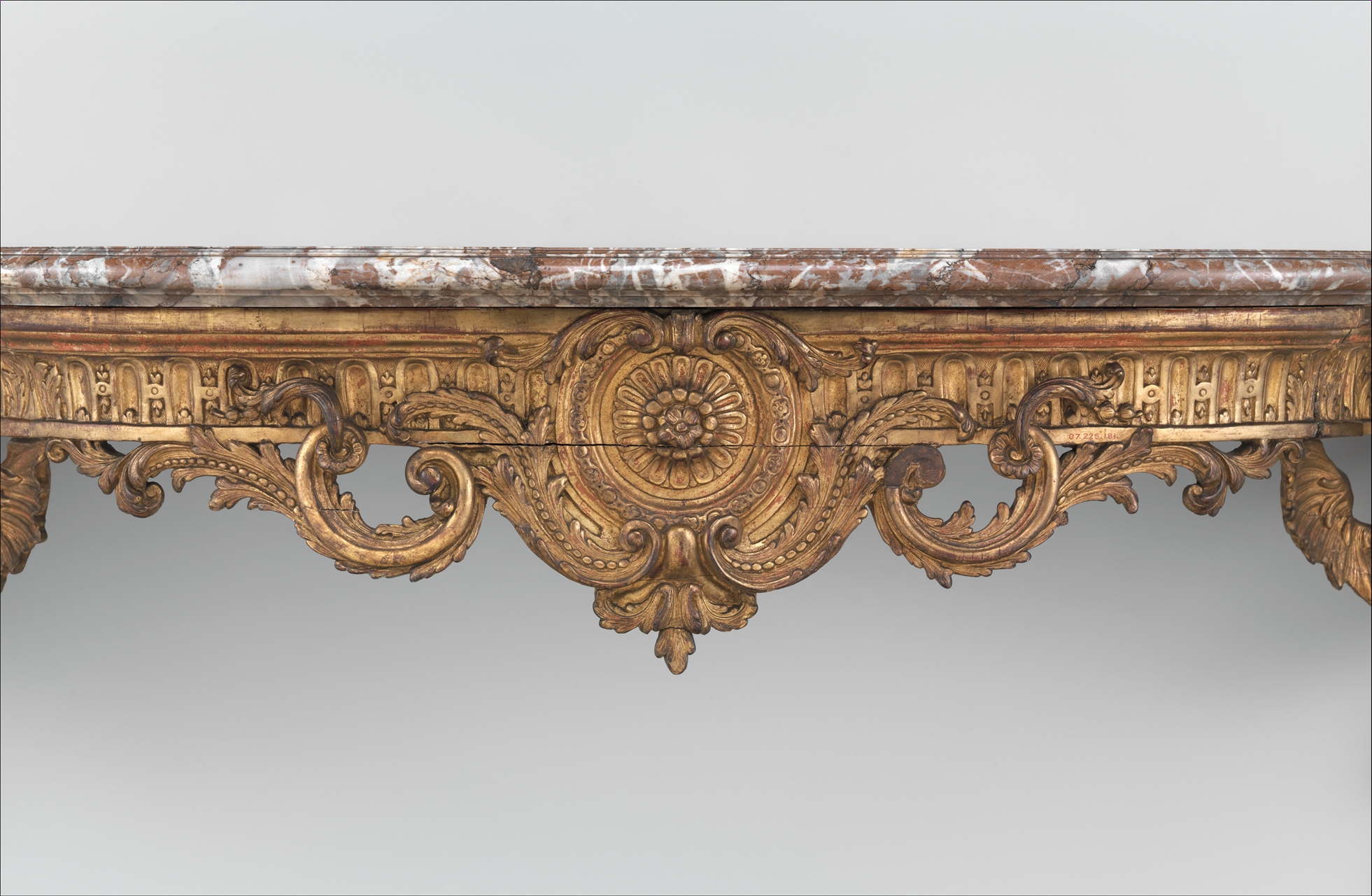Console table
Not on view
Supported on one or two legs, console tables need to be attached to the wall for stability and are considered to be part of the interior decoration of a room. They were made by a special group of joiners, menuisiers en bâtiments (litt. building carpenters) responsible for the fixed elements in the interior such as paneling, pier glasses and console tables. Unlike other members of the guild, these craftsmen were not required to stamp their output and for that reason it is rarely known who created such works. The apron of this early eighteenth-century console table displays symmetrical carving which is centered on a rosette framed by two scrolling acanthus leaves. The tips of these large leaves playfully touch the wings of two scaled dragons, their tails wrapped around the table’s cabriole legs which end in hoof feet. These fantastic creatures bear similarities to those regularly found in the compositions of the French sculptor Jean-Bernard Toro (1661–1731) celebrated for his ornamental designs.
Due to rights restrictions, this image cannot be enlarged, viewed at full screen, or downloaded.
This artwork is meant to be viewed from right to left. Scroll left to view more.





